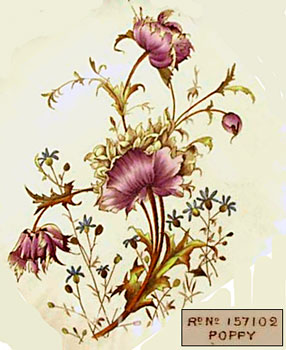ART NOUVEAU
c.1880 to 1910)
Art Nouveau is said to be the first 20th century modern style and a short movement at that. It was the first style to use the natural world as inspiration.The movement went through Europe gaining a lot of attention. The idea of the movement was to abolish the hierarchy of the arts however the movement went out of fashion in the 1920's to make way for the new Art Deco. Art Nouveau however is still remembered as featuring a substantial part in modernism.
Many Art Nouveau designers felt that 19th century design had been excessively ornamental, and in wishing to avoid what they perceived as frivolous decoration, they evolved a belief that the function of an object should dictate its form. This theory had its roots in contemporary revivals of the gothic style, and in practice it was a somewhat flexible ethos, yet it would be an important part of the style's legacy to later movements such as modernism and the Bauhaus.
some of the things going on in the world at this time were:
Many Art Nouveau designers felt that 19th century design had been excessively ornamental, and in wishing to avoid what they perceived as frivolous decoration, they evolved a belief that the function of an object should dictate its form. This theory had its roots in contemporary revivals of the gothic style, and in practice it was a somewhat flexible ethos, yet it would be an important part of the style's legacy to later movements such as modernism and the Bauhaus.
some of the things going on in the world at this time were:
- 1859 The Origin of the Species is written by Charles Darwin
- 1865 War and Peace is written by Tolstoy
- 1867 Disraeli is prime minister
- 1899 aspirin is first marketed
- 1901 Marconi transmits first radio signals across the Atlantic
The style is:
- Elongated
- Curved Lines
- Vertical Lines
- Height
- Stylized, roots, flowers, leaves
- The female form ( exotic, sensuous, jeweled )
- Organic
Some of the Influences for Art Nouveau being:
- arts and crafts - art nouveau shared the same belief in quality goods and fine craftsmanship but was happy with mass production
- rococo style
- botanical research
There were some major artists that influenced this movement some of which were:
- Charles Rennie Mackintosh - architect and designer of furniture and jewellery
- Alphonse Mucha - posters
- Aubrey Beardsley - book illustrations
- Louis Comfort Tiffany - lighting
- René Lalique - glass and jewellery
- Emile Galle - ceramics, glass and furniture
- Victor Horta - architect




No comments:
Post a Comment